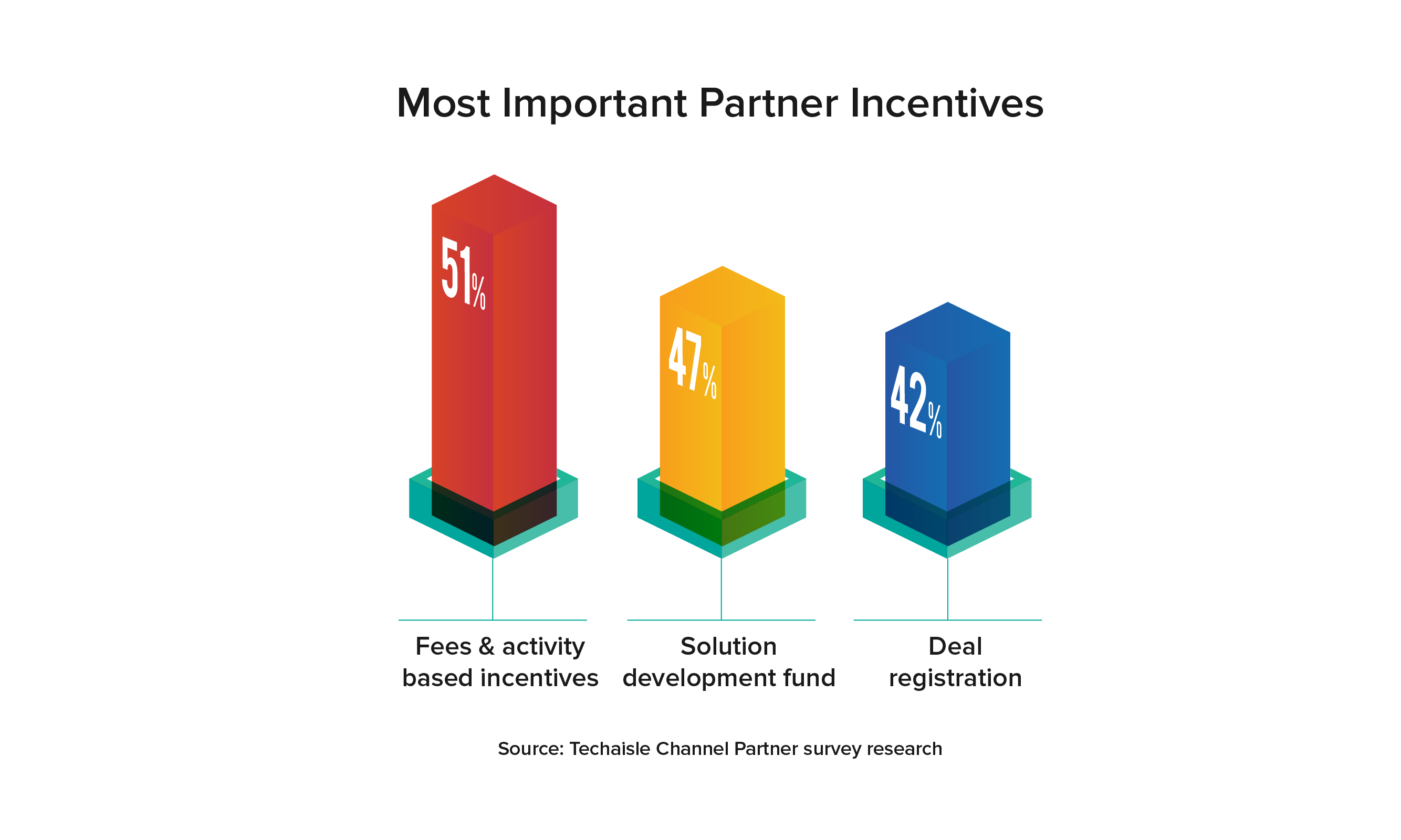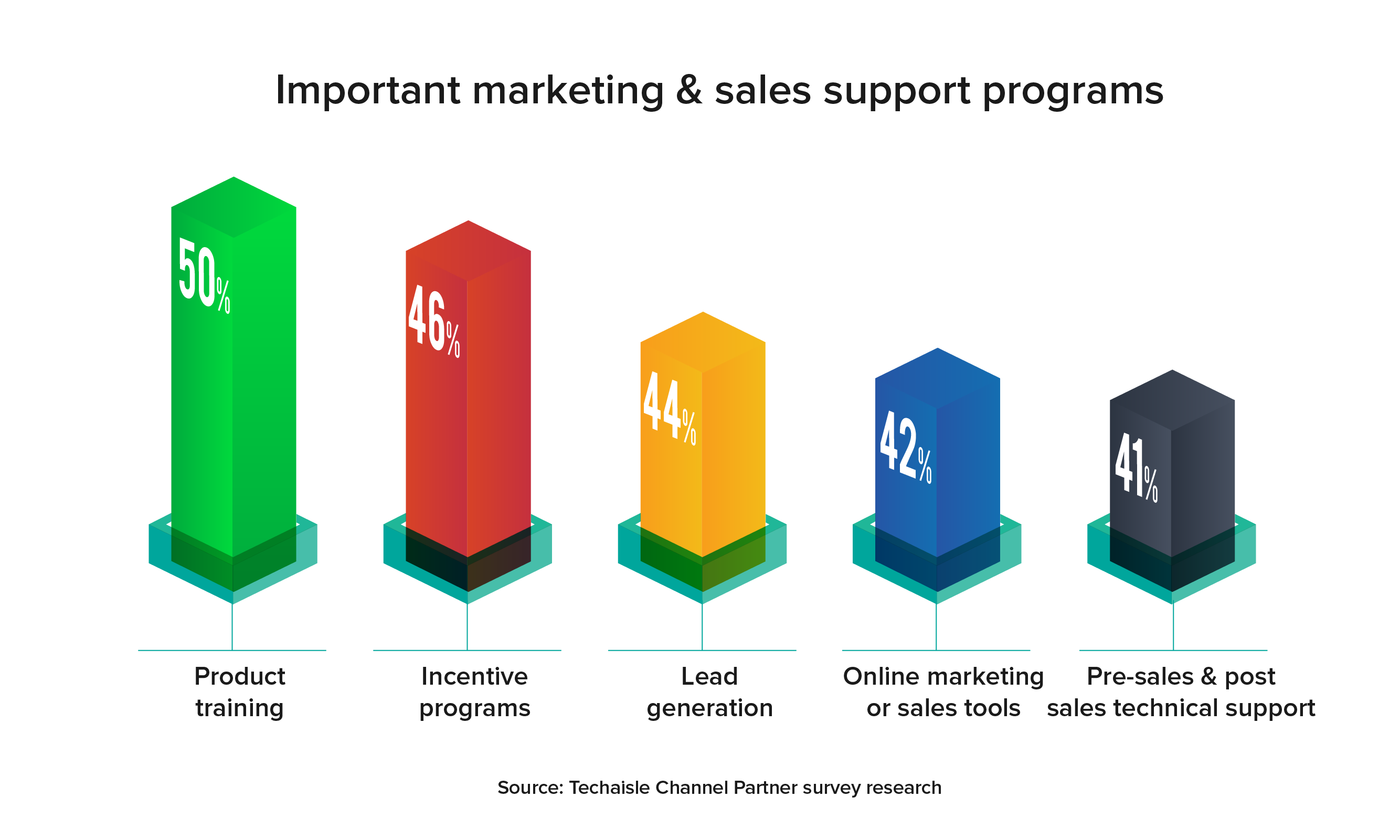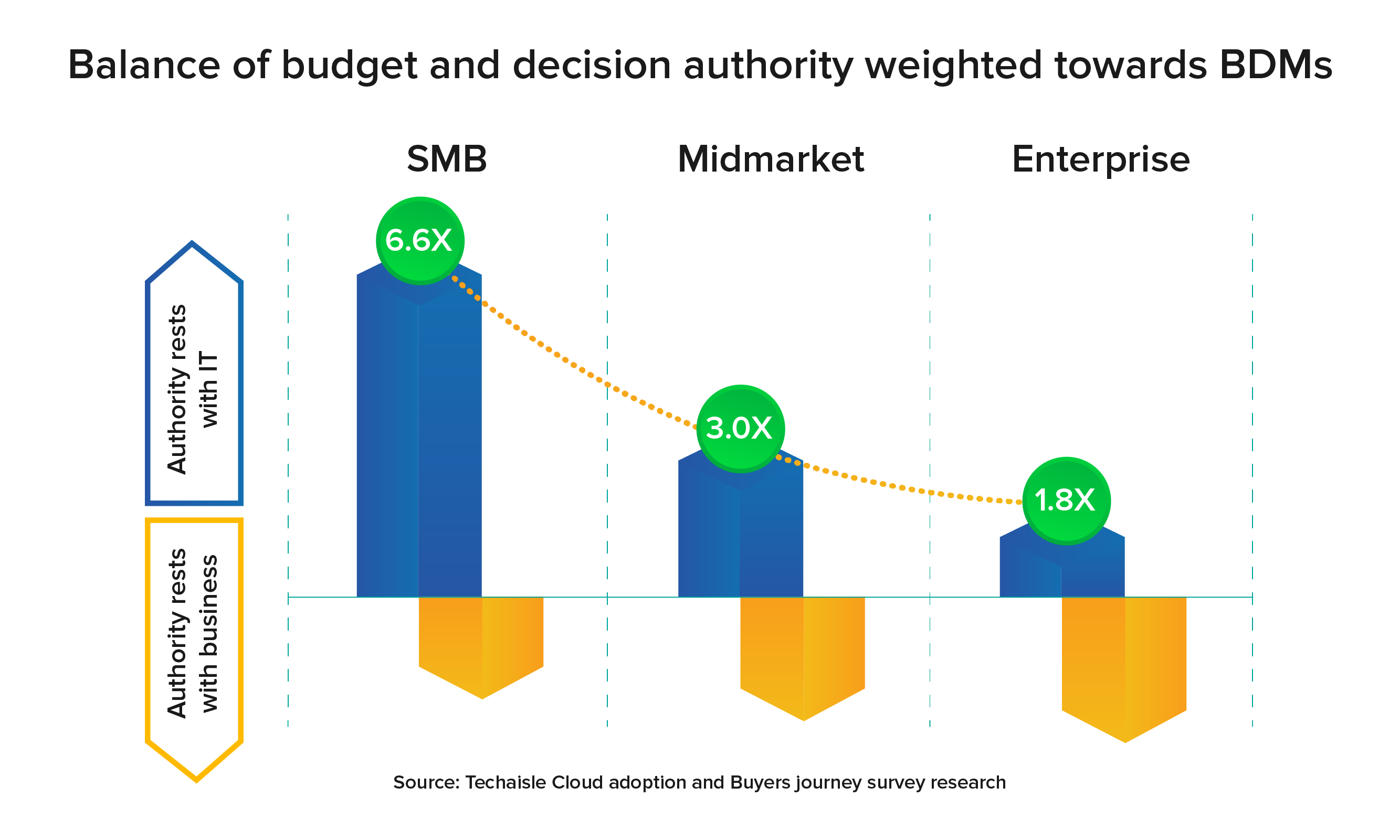Techaisle Blog
Google Cloud partner program setting a frenetic pace for partner intimacy and enablement
Setting the Pace
Amazon AWS lets a thousand flowers bloom, Microsoft Azure has curb appeal, Google Cloud is the new gold rush. Google Cloud reported Q3 revenues of US$4.99B, an increase of 45% year over year. During the same period, Google Cloud's operating loss has narrowed from US$1.2B to US$644M. Partners are optimistic. Although Google's partner program may be nascent, it is evolving rapidly, setting a frenetic pace and speeding down the right track. The partner management team within a vendor organization is responsible for the quality of partner relationships, a critical responsibility. Ramping up new partners is expensive and time-consuming. Partner portfolios deliver the most significant returns when vendors achieve high buy-in levels and mind share within their partner communities. Partner management isn't defined solely by relationship quality, though. The effectiveness of individual relationships and partner programs and activities can be measured in terms of sales impact – and sales impact itself is generally driven, at least in immediate terms, by the quality of sales enablement and support
Kevin Ichhpurani, Vice President, Global Partner Ecosystem & Business Development at Google, is creating a partner differentiation strategy. The strategy includes a no-services friction partner first approach, developer training, selling to line of business buyers, incentives alignment, and driving marketplace revenue. Carolee Gearhart, Vice President, Global Channel Sales & SMB Sales at Google, takes the strategy further by clearly defining fundamental tenets of partner advantage – simple, collaborative, innovative, and built for growth. Google never built Google Cloud as a channel business. To begin with, Google Cloud is enabling partner transparency, increasing visibility of information, and simplifying lead registration.
Google Cloud has two main product lines: Google Workspace, a subscription SaaS solution, and Google Cloud Platform, a cloud consumption solution. Since they are different products, they have different buyers, buying economics, and competitors. To have an efficient partner program, Google is building a program that meets where the customer is buying rather than changing the sales motion. Instead of creating a partner program for different partner types, Google is developing a program based on engagement models. Early on, Google realized that it does not have an installed base to which partners can sell renewals. Partners, therefore, have to visualize compelling economics to invest in Google Cloud Platform and Google Workspace. Hence, Google has invested in activity-based incentives in the pre-sale stage. Incentives that drive customer demand and lead to sales. Partners have differentiated motivations that drive new customer acquisition, upgrades, and multi-year contracts for Google. It has attractive deployment incentives and recently introduced adoption and consumption incentives, giving partners incremental profitability and incentivizing them to grow their book of business.
Partners are listening
Partners are listening and increasing their resource investments in GCP. Techaisle data shows that 58% of partners are building in-house expertise in Google Cloud. And 62% of SMB-focused partners are either currently offering or planning to offer Google Workspace solutions. We have spoken with many AWS, Azure, and Google Cloud partners in the last six weeks. As one partner put it most eloquently, "…but the reason we are standardizing on GCP is that it offers some of the best incentives that are out there. We used to work with AWS as well. And previously, my last organization worked heavily with AWS and Azure. We knew that Google had one of the best hosted Kubernetes offerings that are out there. Once we started working with Google, we found out that not only were we right, but Google also can manage Kubernetes clusters across all the clouds. And we also wanted to get into a little bit more data analysis and, in some ways, machine learning. Google has its Cloud Vision API, its natural language processing engines, Big Query, and just a mighty engine for any data analysis services. Microsoft, Amazon likes to say that they offer a better ecosystem, but we wouldn't necessarily consider that ecosystem a mature one just yet. There are not as many integrations as they are marketing. And Google has so far stayed true to its word on what they were able to promise as far as just raw processing power."
Thoughtful incentives enabling partner engagement
A key enabler for partner intimacy is the alignment of incentives for the entire customer lifecycle – from demand generation to customer adoption and cloud consumption. Google's attention to detail for both pre-and post-transaction is a vital partner empowerment lever. It naturally has a tremendous revenue flywheel effect for the partner. Google's deep focus on pre-sales incentives for partners has the partners excited. When PoCs make or break customer relationships, pre-sales funding is essential. As another Google partner told us, "Our incentives primarily come in the form of PSF and leads that Google funnels our way. So, during the SOW process, a significant portion of the SOW is paid for by Google. We do a lot of proof of concepts and pilots and just set them in secure landing zones. And I'd say probably say the large majority of PSF probably goes towards those types of engagements."
Sales incentives are one of the areas of highest vendor channel investment. Techaisle's partner research shows that fees and activity-based incentives, solution development funds, and deal registration are necessary enablement incentives for 40% to 50% of partners. Over 60% of partners prefer Sell To/Sell With sales models, indicating the need for co-sell, co-marketing, and IP-led solutions. Data shows that 29% of partner revenue is coming from IP-led solutions. The steady rise in demand for solution development funds and the decline of market development funds shows that partner IP-led solutions are becoming front and center. Recognizing the trend, Google has devised incentive programs to engage with different partner business models and partners selling Google Workspace and Google Cloud solutions.
However, the above does not mean that GCP is over-indexed on sales incentives. Google Cloud's incentive programs are designed to help customers in getting to what they need versus trying to incentivize partners in their sales business. Many partners tell us that GCP's incentives programs are very crystal clear, easy to understand, and practical as well. For example, if a customer has never used Google Cloud, but partners see a potential to get them over to GCP, they approach the customer with a "You want to run a PoC or a pilot? Let's get that going." And then there are some program rules that Google funds these PoCs or pilots, either partially or wholly, based on how large that account is or the opportunity size. Post-PoCs, even in case of migrations, a customer may decide to migrate using in-house resources or prefer to work with a partner and accelerate that migration. Google heavily incentivizes customers to choose a partner to get the migration done, and that's where the service's cost for partners gets funded by Google Cloud, again, partially or entirely based on opportunity size.
From Google's perspective, enablement is a matter of resource allocation. In theory, any of Google's competitors could identify and then replicate, at least to some extent, industry-leading practices across all primary sales and marketing areas. The problem is that it would incur an unsustainable level of cost. Google needs to cover all primary bases but allocates the highest proportion of resources to the areas with the most significant impact on their partners. The first question that Google should ask about enablement isn't 'what might we invest in?' but 'what programs are most important? Techaisle data indicates that product training, mentioned by 50% of channel decision-makers surveyed by Techaisle, is the essential way vendors can support their go-to-market activities. Incentive programs (46%), lead generation (44%), online marketing/sales tools (42%), pre-and post-sales technical support (41%) are all cited as influential by channel firms.

Addressing the shifting buyer behavior
Selling to LoB for digital transformation is imperative for Kevin Icchpurani and Carolee Gearheart. Technology is a strategically-important input to most businesses. As per Techaisle's buyers' journey research, 60% of the budget comes from business decision-makers. As the balance of decision-making authority has tilted towards the business decision-makers, 47% of channel partners (Source: Techaisle channel partner survey research, 2021) are doing a lot more line-of-business selling than five years ago. The buying groups within most organizations include business stakeholders as well as IT professionals. This represents a significant change for channels that are typically more engaged with and more comfortable with IT decision-makers (ITDMs) than BDMs. In addition, 55% (Source: Techaisle channel partner survey research, 2021) of partners sell multi-vendor solutions, which helps them address customer business requirements, layer in support and integration, and land on a position that offers a flexible platform approach supporting repeat business and healthy margins.
Industry-specific business solutions that connect digital capabilities to real-world challenges are critical factors in transitioning from digitalized to digitally transformed organizations. A clear trend has emerged of providing cloud solutions for vertical industries. Financial services, healthcare, and industrial equipment manufacturers have witnessed high adoption of such solutions. Research by Techaisle shows that by the end of 2021, As per Techaisle's Midmarket cloud adoption trends survey research, 43% of midmarket firms will deploy vertical/LoB focused cloud solutions, increasing 125% from 2020. As one partner told us, "There is a huge potential for cloud-based vertical solutions to grow. Most of the projects we receive are from healthcare service providers seeking our expertise for the creation of industry-specific solutions in addition to applications migration to cloud from their on-premises data centers."
Staving off competitive partner pressures
Amazon AWS and Azure's partner network versus what Google Cloud has is way different. Azure and AWS have saturated that whole ecosystem. There are too many partners of different scales and sizes operating and trying to find their own space within that partnership, which has made it difficult for all businesses to thrive equally, which is not the case with Google Cloud. So Google Cloud has been very selective in its partnerships. They don't let all firms become partners, but whoever partners with them is beginning to get the proper support from the Google Cloud Partnership Teams, and they are trying to make sure that the ecosystem thrives.
The CEO of a significant consulting partner of GCP told me, "To sum it up, I would say there are two things. First, my company is a change agent, a competitive brand, introducing new, exciting, and innovative solutions. That aligns very well with how Google executes as well as how they talk. Google is trying to climb up against the already established hyperscalers. And so, from a sales and delivery organization, we share that culture. Second, being third in the market, they have a little bit of competitive advantage of seeing where the other public clouds have gone wrong with solutions and partner programs. And they are building their product and programs in the wake of that. So from a top-line revenue perspective, they are behind but moving at a frantic speed. But from an innovation path to scale longevity, I think they probably have the best well-rounded solutions stack and an evolving partner program."
Final Techaisle Take
The industry is shifting very dynamically where businesses don't look at the cloud as a commodity, where AWS and Azure were mainly thriving off. Now that the customers look at the cloud beyond commodity, they start looking at their cloud provider choices. And this is where Google Cloud has been shining. I wouldn't say Google Cloud has been doing this well for a very long time. But, at least in the last two to two and a half years, they have significantly changed and added more layers of offerings within their portfolio, and that has been differentiating Google Cloud for several customers. Of course, from an adoption standpoint, Google Cloud is still at the lowest tier, but the growth of Google Cloud adoption that we've seen in the industry has been phenomenal, much steeper than what AWS and Azure have today. It is one of the primary reasons partners have gravitated to Google Cloud for enterprise, mid-market, or small to medium-sized business customer requirements. These customers are looking at Google Cloud now more seriously than what they used two or three years ago. Google is meeting where the partners are to drive partner commitment, intimacy, and enablement. It is doing so at a frenetic pace.
When you subscribe to the blog, we will send you an e-mail when there are new updates on the site so you wouldn't miss them.














